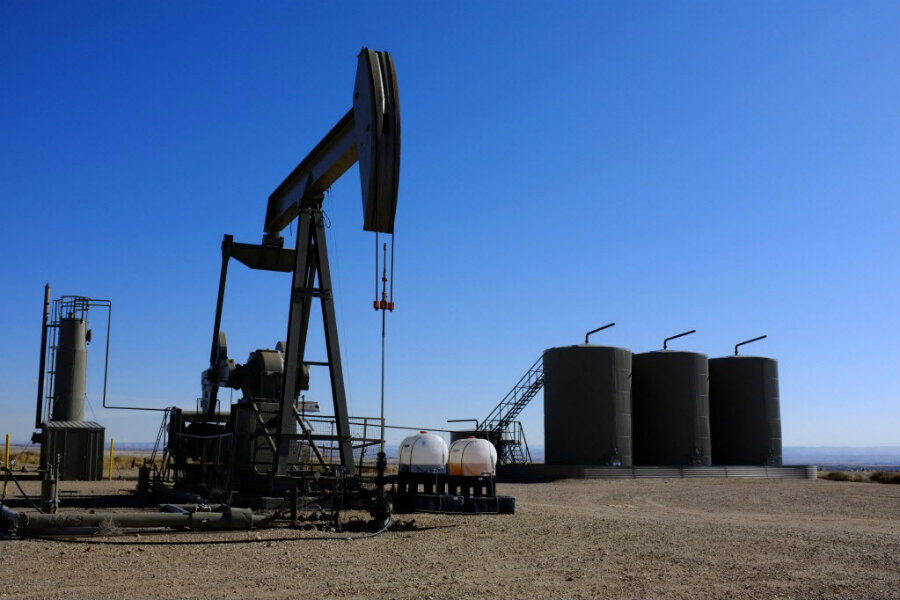On Earth Day, is the auto industry running out of gas?
Loading...
Given how cheap oil is these days, an end to the marriage of oil and automobiles seems far off in the future. But a team of Bloomberg analysts are suggesting a world of gas-free cars could happen sooner than you might think.
Presenters at the Bloomberg New Energy Finance (BNEF) summit this past week argued that oil's low price of $50 a barrel – down from over $100 a barrel just last July – isn't entirely due to the increased supply of oil from fracking, tar sands, and other unconventional sources. Instead, it's the result of an abundance of energy from all sources – and the more efficient use of all that new energy.
"Where we are is in an age of plenty,” Michael Liebreich, BNEF's founder (full presentation here), told Bloomberg. “We have cheap oil, cheap gas, cheap renewables. You do have an abundance of supply in a way you haven't had for decades. We also are in an age of competition.”
Since 2008, the United States alone has added 4 million extra barrels of oil barrels of crude per day to the world oil market through "unconventional" extraction, such as fracking and horizontal drilling, according to the Energy Information Administration (EIA). World oil production stands at about 94 million barrels a day, according to the International Energy Agency (IEA). At $50 a barrel, this growth in the global oil supply has increased alongside the another resource that is trying to become life blood of the auto industry: renewable energy.
The London-based research team argues that US oil consumption has largely flatlined after peaking in 2004 at 22.7 million barrels per day, citing EIA figures. By comparison, in 2013 oil consumption had tailed off slightly to 18.7 million barrels per day, according to the EIA. The same agency reported this figure shot back up in 2014 to just over 19 million barrels per day in 2014, which suggests that demand is currently falling into some range between 18 and 20 million barrels per day on average, but that it is not immune to surges.
They also presented a conceivable way the auto industry could evolve in the coming decades to maximize fuel efficiency in autos, and possibly one day abandon the internal combustion engine altogether.
The team said the auto industry is on the cusp of redefining its relationship with fossil fuels and is on its way to becoming more of a mainstream concept. The EIA's 2014 Annual Energy Outlook predicts that increasing fuel economy requirements will drive down Americans' consumption of gasoline to just over six million barrels of gasoline per day by the year 2040. Currently Americans burn more than eight million barrels of gasoline per day. The EIA cited National Highway Transportation Safety Administration predictions mandating light-vehicle fuel economy standards to be upwards of 50 miles per gallon by the year 2025.
“There was a 60 percent increase in efficiency of the U.S. auto fleet in the last 16 years,” Mr. Liebreich told Forbes. “This is a global phenomenon.”
So with fuel efficiency increasing, how long before the auto industry takes the next step and makes a radical shift away from internal combustion?
The BNEF team asserted that the electric car market was catching on. Over 45,000 fully electric cars were sold in the US in 2014, almost doubling the sales from the prior year, according to CleanTechnica.com. And in 2014 European sales were up 77 percent in the first half of 2014, with Norway pacing the continent with nearly 10,000 cars sold. The BNEF research set 2014's fully electric sales at 288,850 units worldwide, which only accounts for .5 percent of all auto sales, but that's more than five times more than 2011's electric car sales, according to the report. There were 17,000 fully electric cars brought to the U.S. for sale in 2011, according to Green Car Reports.
This increase in sales was attributed by the BNEF to the 60 percent drop in the cost of the lithium ion batteries that propel electric cars. The Conversation reported that the costs per kilowatt hour for a lithium ion battery today is $300, but could drop to $200 by 2020, and the wholesale price of a battery could decrease from $7,500 to $5,000 in the same time frame.
This is not to say the big oil will be left behind by the auto industry as plastics will still be required in car interiors and it takes seven gallons of oil to make a tire. Therefore, the car industry is not headed for a bitter divorce with oil but could drastically reduce its dependence on the resource.
The BNEF group also touched on the development of fuel cell cars, but by and large they are just starting to break out of the laboratories and into showrooms. BNEF predicted that Japan would lead the way and have more than 4,000 fuel-cell cars on the road by 2018. All told, the group presented a not-too distant future where no-tailpipe-emission cars are sold at a competitive price alongside their internal-combustion counterparts.






